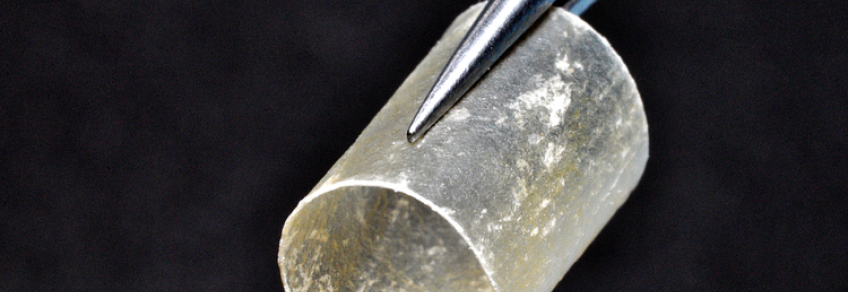
AxoGuard Nerve Connector
AxoGuard Nerve Connector is the only porcine submucosa extracellular matrix (“ECM”) coaptation aid for tensionless repair of transected or severed peripheral nerves. While allowing for the close approximation of severed nerves, AxoGuard Nerve Connector aligns and connects severed nerve ends with less than a 5 mm gap. The AxoGuard ECM material allows the body’s natural healing process to repair the nerve by isolating and protecting it during the healing process. The patient’s own cells incorporate into the extracellular matrix to remodel and form a tissue similar to the nerve epineurium. AxoGuard Nerve Connector can be used for, relieve tension at the coaptation site of severed nerves, aid coaptation in direct repair, grafting, or cable grafting repairs and reinforce the coaptation site
AxoGuard Nerve Connector has the following key advantages:
• Alleviates tension at the repair site
• Preserves the native architecture of the extracellular matrix
• Reduces the number of required sutures (versus direct repair)
• Reduces potential for fascicular mismatch
• Strong and flexible, easy to suture
• Stored at room temperature with an 18 month shelf life.
INDICATIONS FOR USE
AxoGuard® Nerve Connector is indicated for the repair of peripheral nerve discontinuities where gap closure can be achieved by flexion of the extremity. The device is supplied sterile and is intended for one-time use.
CONTRAINDICATIONS
This device is derived from porcine source and should not be used for patients with known sensitivity to porcine material.
REFERENCES:
Weber, et al. 2000, Plast Reconstr Surg 106(5):1036-1048.
Schmidhammer, et al. 2004, J Trauma 56(3):571-584.
Millesi, et al. 1972, J Bone Joint Surg Am 54(4): 727-750.
Evans, et al. 1991, Brain Res 559(2):315-321.
Hasegawa, et al. 1996, J Hand Surg [Am] 21(2):259-265.
Zhang, et al. 2009, Artif Cells Blood Substit Immobil Biotechnol 37 (2):101-104.


